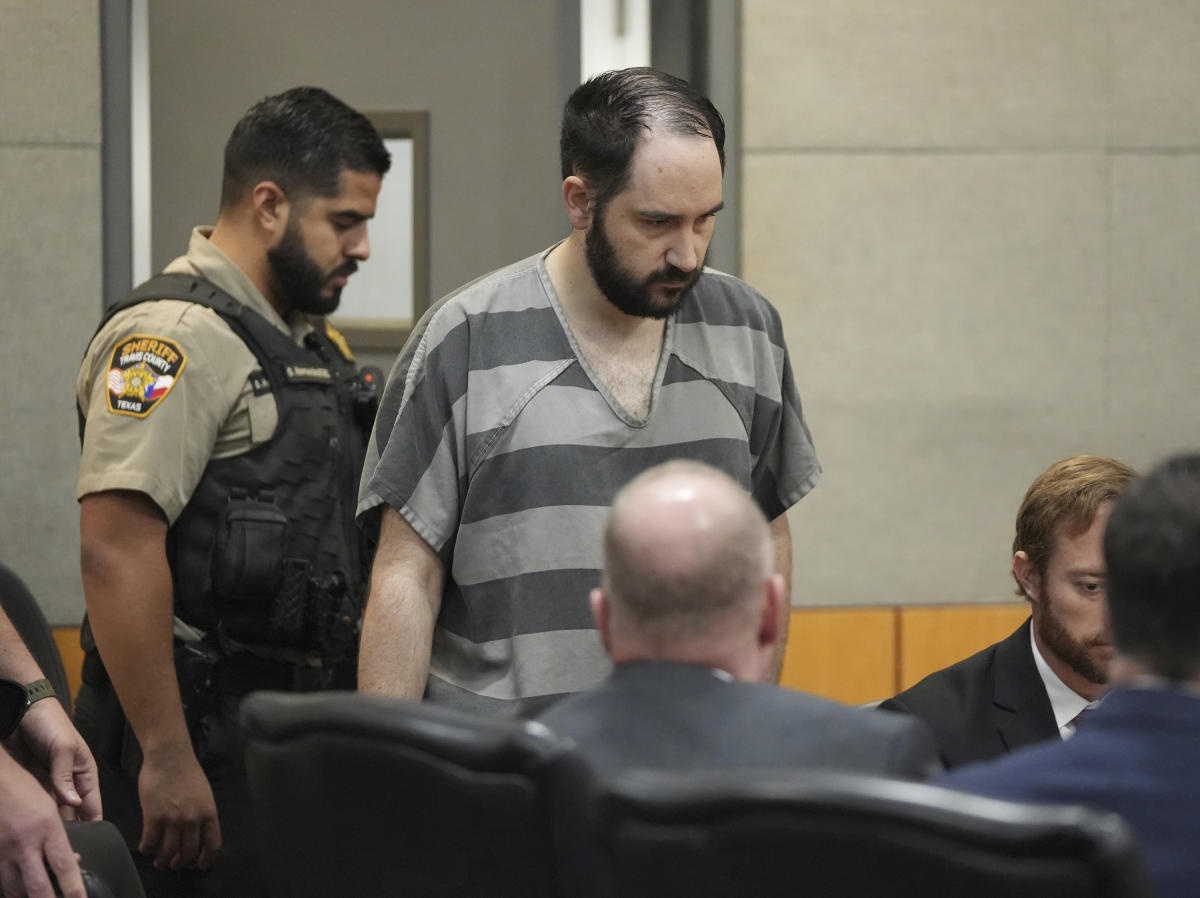“We’re not voting necessarily today on whether you’re pro-life or pro-choice,” Kristin Drummond, 19, a medical science major from Kentucky, told one freshman who said she favored abortion rights. “This is about whether or not this amendment is something we should have, because it’s very extreme.”
Three months after a failed attempt by abortion opponents to make it harder to amend the state constitution, Ohioans will head to the polls again Nov. 7 to decide whether to enshrine reproductive rights in the state constitution. Early voting is already underway, television ads are proliferating and millions in political money is flowing into Ohio. The amendment’s backers have outraised the antiabortion side, but together they have spent more than $40 million on television advertising and other expenses so far, campaign records show.
Abortion is currently legal in Ohio up until 22 weeks. A six-week ban was briefly in place last year before being put on hold by a judge, but not before the number of abortions dropped and patients fled to other states for care — including a 10-year-old rape victim whose case caused a national uproar.
Since the U.S. Supreme Court overturned Roe v. Wade’s federal abortion standard last June, voters have sided with abortion rights advocates in six other states, even in conservative Kansas and Kentucky. Advocates in nine states are pushing for ballot campaigns next year and beyond. With the August vote already a sobering sign for opponents, a July poll from USA Today and Suffolk University found that 58 percent of Ohioans backed the proposed amendment, and 32 percent opposed.
Antiabortion forces here are trying to bring centrist voters into the fold, the so-called “mushy middle,” as Michael Gonidakis, the president of Ohio Right to Life, put it.
“We live in a diverse state, and one side overreached and the rest of Ohio has to respond,” said Gonidakis. “This ballot language is a bridge too far even for pro-choice Ohioans.”
Lauren Beene, a pediatrician who heads Ohio Physicians for Reproductive Rights, counters that the opposition campaign is deliberately underplaying the reality of the six-week ban, which the state’s conservative Supreme Court could put back into effect.
“The anti-choice people are trying to pretend the six-week ban doesn’t exist and our governor didn’t sign it into law,” Beene said. If the abortion amendment fails and the six-week ban is upheld by the court, she said, “we’ll go back into that medical crisis period we all saw in 2022.”
The Nov. 7 amendment, known on the ballot as Issue 1, would if approved make it a state constitutional right to “make and carry out one’s own reproductive decisions,” including abortion, contraception, fertility treatment and miscarriage care. It would allow the state to restrict abortion after fetal viability, except when “necessary to protect the pregnant patient’s life or health” — which proponents say is a reasonable limit most Americans would agree with.
The August defeat spurred internal finger-pointing and recrimination within conservative camps; GOP leaders were accused of shying away from publicly supporting the controversial measure that drained money and support from the November ballot race.
In a press statement following the defeat, the conservative Susan B. Anthony List said that “the silence of the establishment and business community in Ohio left a vacuum too large to overcome … So long as the Republicans and their supporters take the ostrich strategy and bury their heads in the sand, they will lose again and again.”
But some of the state’s Republican leaders had been vocal in their support, including its chief architect, Ohio Sec. of State Frank LaRose, a U.S. Senate hopeful.
Stephen Billy, Susan B. Anthony Pro-Life America’s vice president for state affairs, said leaders are now energized.
Republican Gov. Mike DeWine, who is Catholic, has headlined a fundraiser and get-out-the-vote rally for the opposition, and appeared in a recent ad with his wife Fran urging “no” votes and warning the proposal is “not right for Ohio.” `
Opponents such as DeWine have said the amendment would endanger parental rights — a charge legal scholars dismiss. They have also argued that constitutional protection of a pregnant person’s “health” could be broadly interpreted by doctors and misused, allowing for abortion after viability of a fetus for nonmedical reasons. (Abortions occurring at or after 21 weeks gestational age are rare and represent 1% of all abortions in the United States, according to KFF, the health policy research organization.)
“Our job as we approach this is to try and articulate to people exactly what is in this constitutional amendment and to explain that if it becomes part of the constitution which means it overrides any law we currently have in place,” DeWine said in an interview.
Legal scholars say that parental rights have consistently been retained by the courts, with judges holding that even though minors can be viewed as “individuals,” adults can still intervene.
There is nothing in the amendment that indicates that, if it passes, “parental consent will not remain in place,” said Tracy Thomas, the Seiberling Chair for Constitutional Law and director of the University of Akron’s Center for Constitutional Law.
Some opponents have gone further, falsely alleging that the broad wording would open the door not just to minors seeking abortions but minors seeking gender reassignment surgeries without consent.
Mehek Cooke, the spokeswoman for the antiabortion group Protect Women Ohio, repeatedly referred to the transgender issue in a recent debate, even though the state’s Republican Attorney General, Dave Yost, said in a recent analysis that “it would certainly be too much to say that under Issue 1 all treatments for gender dysphoria would be mandated at the minor individual’s discretion and without parental involvement.”
Although Ohio, once a swing state, has grown more conservative in recent years, the end of federal protections for abortion galvanized even many Republicans, the amendment’s advocates say, making the effort to defeat it an uphill climb.
Republican Thera Parks, 51, an insurance saleswoman from Solon, volunteered this spring to collect signatures to get the abortion amendment on the ballot, working with Red Wine and Blue, an Ohio-founded group that seeks to engage “concerned but unconnected” suburban voters across the United States.
“When reproductive rights are banned, parents don’t have a choice or say over their kids or their families or even their own bodies,” Parks said. “A little girl had to leave Ohio to receive care. A thought of forcing young girls to stay pregnant and carry to term is just terrible to me.”
The controversial August proposal aimed at derailing amendments like November’s failed even in 15 counties that had voted for Trump, a Washington Post analysis showed.
Patrick Brown, a fellow at the conservative Ethics and Public Policy Center in Washington, called the August defeat in Ohio a “five-alarm fire for the pro-life movement.”
“The victory we fought for fifty years is proving to be a lot harder than people thought,” he said. Brown said that the antiabortion movement needs to focus on working to ban elective abortions rather than fighting for extreme bans.
Abortion rights advocates will be victorious in “state after state, until we figure out a better way to talk about it and to reach out to voters in the middle,” Brown said. “Clearly what we’re doing isn’t working.”
He said antiabortion forces need to do be willing to compromise and do a better job of “demonstrating credibility” in their support of pregnant patients and parents.
“A lot of people are saying our battle is won, Roe is defeated,” said Jason Yates, the CEO of My Faith Votes, Christian voter mobilization group, who was in Columbus for a March for Life recently. “The reality is, the fight goes to the states, and unfortunately people aren’t paying attention what’s being in passed in the states.”
DeWine has suggested that the legislature revisit the six-week ban he signed, which does not allow exceptions for pregnant patients who have been raped or who are the victims of incest.
He said his administration has worked to expand support for mothers and their infants, including a home visiting program and $5 million to community and faith-based programs to improve health outcomes.
At the University of Cincinnati event, students were largely respectful of one another’s opinions, stopping by the Students for Life booth to debate, read over the amendment wording on an iPad and register to vote.
“I feel like the state of America for a lot of people right now, they just like aren’t in the place to have a child or to be a parent,” Sasha Thornton, 18, a political science major from Cincinnati who favors abortion rights, told Drummond.
Jamie Curry, the energetic regional coordinator for Students for Life, stepped in.
“We never know what someone is going to face. We can’t end innocent human life just because someone may one day face a hardship,” she said. Curry then launched into a graphic description of a “late-term” abortion; Thornton agreed there should be some limits and rushed off to class, but said she still plans to vote for the amendment.
Curry, 23, who was raised Catholic, came to her advocacy in college, after she met a friend whose mother had been raped. As the vote approaches, Curry has crisscrossed the state, hosting campus events, organizing students to scribble chalk slogans on sidewalks and wielding a bullhorn to lead chants at rallies.
She said she does not believe that the loss in August presages a failure on Nov. 7. Roe’s end, she said, was just the beginning.
“We say it was a victory and we will take it but that was 100 percent not the end,” Curry said. But despite coaching the students under her to take a moderate view while out campaigning, she is not for legislative compromise.
“We still have a lot of work to be done. We will not stop fighting until abortion is inaccessible everywhere,” she said.
Emily Guskin and Scott Clement contributed to this report.

Amanda Smith is a dedicated U.S. correspondent with a passion for uncovering the stories that shape the nation. With a background in political science, she provides in-depth analysis and insightful commentary on domestic affairs, ensuring readers are well-informed about the latest developments across the United States.








